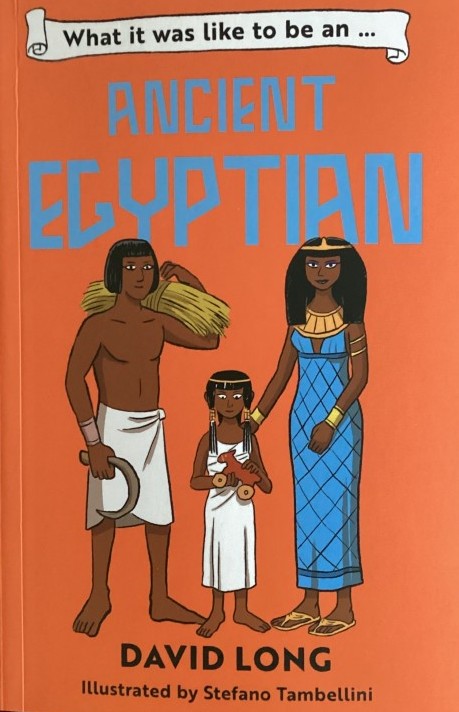Inspiring Young Readers
 posted on 14 Apr 2025
posted on 14 Apr 2025
What it was like to be an ANCIENT EGYPTIAN by David Long, illustrated by Stefano Tambellini
Back in 2023, I was fortunate enough to review the first of David Long’s series ‘What it was like to be…’ series which featured, in that case, the Vikings. What it was like to be an ANCIENT EGYPTIAN is now the fourth in the series and, I’m delighted to say, it follows a very similar formula to that first outing.
The first important lesson we learn is that what we might call the ancient Egyptian civilisation lasted for a massive 3,000 years and so it’s easy enough to see that there was no one single experience of being Egyptian in that great span of time. If we go back some 7,000 years we discover that the land was originally known as Kemet and it was the existence of the great River Nile that made it possible for farmers to make a living in what was otherwise an arid landscape. This was the basis of their growing wealth and power – which culminated with an empire full of the things we now associate with ancient Egypt: Pharaohs, pyramids, mummies, statues and fabulous art and crafts.
But author, David Long is careful to remind us that – as with life throughout history in most civilisations – the life experiences of the people depended on their status in society. For the rich and powerful it was a very different life to that experienced by the poor and lowly:
“The very poorest were the many thousands of enslaved people. They were given food, shelter and clothing, and didn’t have to pay taxes like other Egyptians, but in times of famine they were probably the first people to starve.”
Separate chapters are given over to the vagaries of food production and farming which was critical to the maintenance of empire; we see what our best research can tell us about how they built the extraordinary monuments, especially the pyramids; we learn about their religious beliefs and what they imagined the afterlife to be like; and, most interesting to me, their development of writing, art and exquisite craftsmanship.
History tells us that all great empires come to an end eventually and the final act of this one was the occupation in 30 BCE by the Romans and the subsequent death of the final Pharoah, Cleopatra – a name that most of us have heard of.
The book is, once again, excellently illustrated by Stefano Tambellini and this would make a really excellent addition to school libraries – and it will get plenty of use when the inevitable Ancient Egypt project rolls along.
Available now from Barrington Stoke, who specialise in producing books for reluctant readers of all kinds, you will be able to get a copy from your local independent bookshop – who will be happy to order it for you if they don’t have it on their shelves.
Terry Potter
April 2025